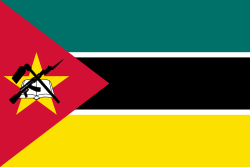Igandu train disaster
| Igandu train disaster | |
|---|---|
| Details | |
| Date | 24 June 2002 |
| Location | Igandu, Dodoma |
| Country | Tanzania |
| Rail line | Central Line |
| Operator | Tanzania Railways Corporation |
| Type of incident | Runaway and Collision |
| Statistics | |
| Passengers | 1,200 |
| Deaths | 281 |
The Igandu train disaster was an accident which occurred during the early morning of the 24 June 2002 in the African Great Lakes country of Tanzania. In one of the worst rail accidents in African history, a large passenger train with over 1,200 people on board rolled backwards down a hill into a slow moving goods train, killing 281 people.
Overview
The train had travelled from Dar es Salaam to the state of Dodoma in Central Tanzania, had passed Msagali, and was nearing the city of Dodoma, when it began climbing the tracks at a hill called Igandu. It is believed that there was a fault with the train's brakes as it climbed the hill. The driver stopped the train near the summit of the hill, inspected and adjusted the braking system and climbed back into the cab. When he started the train again, the brakes failed totally, causing the train to roll, with great velocity, straight back down the hill, crashing after passing two stations into seemingly slow moving goods train which was travelling to Dar es Salaam.
Local people joined with ambulance services to rescue as many as they could. The shortage of doctors at Dodoma hospital was so severe that the Tanzanian health minister, Mrs Anna Abdallah was obliged to help with the more than 400 people badly injured. Rescue teams were also hampered by the lack of large cutting machinery or industrial equipment needed to cut or lift wreckage off injured people, which did not arrive until the evening.
Four days after the incident, the Tanzanian government released a statement to the effect that 281 people had been killed by the crash, or had died subsequently in hospital, although this number was likely to increase, given the number of people injured critically. 88 bodies were never identified, and were buried in Maili Mbili grave yard outside Dodoma. The state-owned railway company, Tanzania Railways Corporation, later presented payments of between 100,000 and 500,000 shillings to the families of the victims, a pay-out which angered some people who blamed the TRC for the crash.
During the months prior to the accident, Tanzania had been searching for a private company to assume control of the dilapidated state railway system, and had been interviewing representatives of European and South African companies. Eventually, the TRC was concessioned to the Rites Consortium of India in 2007 but was claimed back by the Government on 2011.
There was also speculation, emphatically denied by both the organisation and Prime Minister Frederick Sumaye, that the crash was sabotage committed by angry train union members, protesting the pending sale of the company. Evidence proving this has never been provided.
Similar accidents
-
 Armagh rail disaster (1889) - which resulted in compulsory continuous and automatic brakes and absolute block for passenger trains.
Armagh rail disaster (1889) - which resulted in compulsory continuous and automatic brakes and absolute block for passenger trains. -
 Chapel-en-le-Frith (1957)
Chapel-en-le-Frith (1957) -
 Gare de Lyon train accident (1988)
Gare de Lyon train accident (1988) -
 Tenga rail disaster (2002)
Tenga rail disaster (2002)
References
External links
Note: 100,000 shillings is roughly equivalent to $100
| ||||||||||